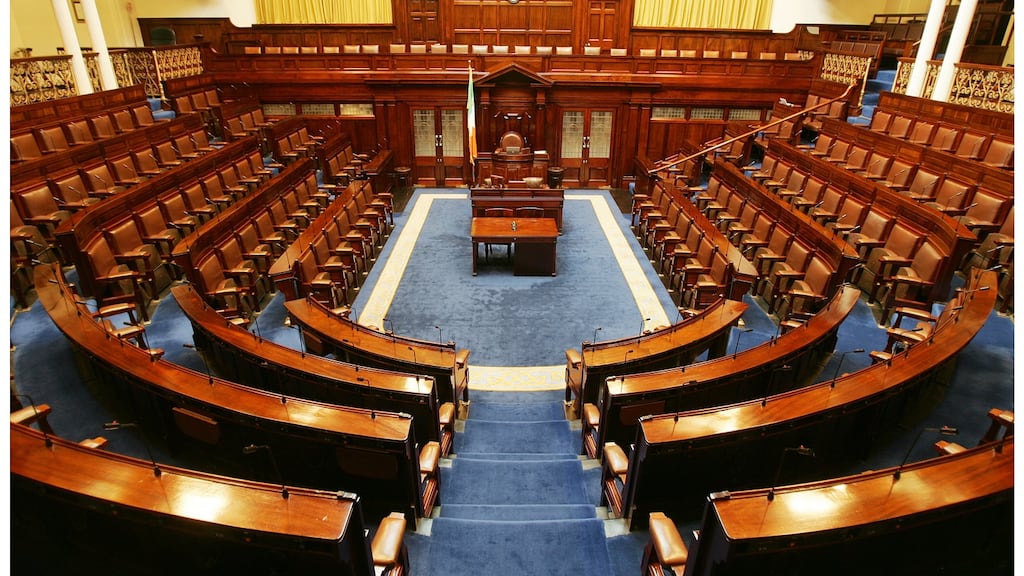A number of possible combinations for forming a government are available following the election, although various parties and groupings have ruled out doing business with others such as Sinn Féin.
A majority in the 32nd Dáil is 79 TDs. While that number is needed to elect a taoiseach, a minority government can survive with fewer deputies. A taoiseach can also be elected on fewer than 79 votes if a group or party of TDs abstain.
Most parties have procedures in place to officially ratify a programme for government or coalition before actually entering office.
Here are all possible options:
Fine Gael-Fianna Fáil coalition
A full coalition would have a comfortable majority but is not favoured by many Fianna Fáil TDs, with sources saying the party grassroots would be strongly against it. A special Fianna Fáil ardfheis would have to ratify an agreed programme for government, and members are unlikely to do so following the party’s election result. The
Fine Gael
parliamentary must ratify an agreed programme for government.
Fine Gael minority government, possibly including some Independents, with Fianna Fáil support from the opposition
Fianna Fáil would support Fine Gael on a case-by-case basis in Dáil votes and the government would be made up entirely of Fine Gael ministers. However, in order to win a Dáil vote on the position of taoiseach, Fine Gael would have to seek the support of others, since Fianna Fáil will not support Enda Kenny.
Non-party deputies would seek some agreement on a programme for government – or a similar, looser arrangement - or constituency deals, which would effectively tie them into the minority government.
Fine Gael could also reach out to the Social Democrats and the Green Party. The Green Party has to ratify any coalition deal at a special party conference and the proposal would have to be approved by two-thirds of delegates. The three Social Democrat TDs would likely make the decision whether or not they would enter government, albeit in consultation with failed election candidates and others in the party.
Under such a deal, Fianna Fáil would have considerable sway over government policy and would seek significant policy concessions.
Fine Gael-led government with Labour, the Social Democrats, the Green Party and Independents
Such a government would be very difficult to assemble, not to mention difficult to manage. Labour would have to get approval from party members at a special conference to re-enter government, seen as unlikely following the party’s disastrous election.
Fianna Fáil and others, such as Labour, AAA-PBP, Social Democrats, Green Party and Independents
This has been pushed by Green Party leader
Eamon Ryan
but is seen as highly unlikely.
Paul Murphy
of the AAA-PBP has dismissed the idea, noting a national conference of the AAA-PBP would have to be held to ratify any coalition .
Fianna Fáil- Sinn Féin and others
This is extremely unlikely since Fianna Fáil has said it will not deal with Sinn Féin and Sinn Féin has said it will not go into government as a junior party. Sinn Féin members have to ratify a coalition arrangement at a special ard fheis.
Fine Gael-Sinn Féin
This is also unlikely, for the same reasons given above.
Minority Fianna Fáil government with Fine Gael support
On a numbers basis, it is plausible but highly unlikely to appeal to Fine Gael as they have the higher number of seats.
AAA-PBP, Sinn Féin and Independents could seek support from the two biggest parties for forming a government led by the left
Sinn Féin and the left display little appetite for such a scenario and are practically encouraging Fine Gael and Fianna Fáil to enter government. The two main parties would not agree either.
Sinn Féin and others
It is not possible for Sinn Féin to gather sufficient numbers to support
Gerry Adams
in a Dáil vote for taoiseach.










